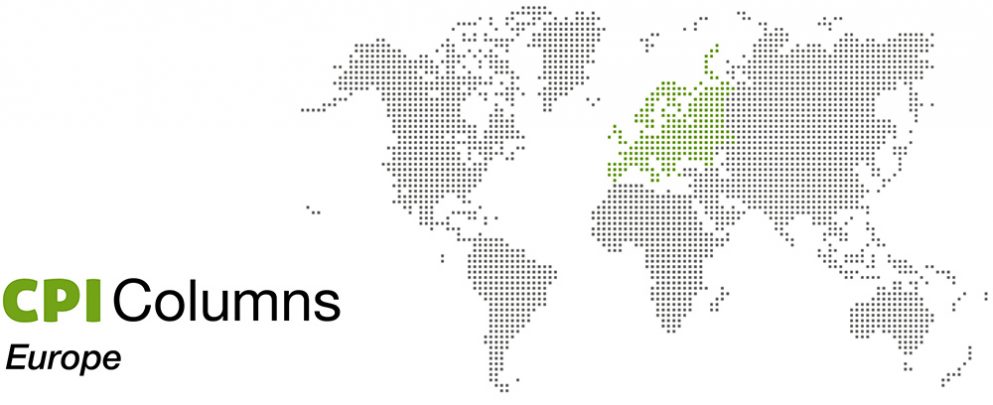 By Jorge Padilla1
By Jorge Padilla1
INTRODUCTION
There seems to be a growing consensus that competition authorities around the world have been too lenient and that the resulting Type II errors have resulted in an increase in concentration in all sectors of the economy. The resulting increase in market power has allegedly caused rising inequality, reduced investment and innovation, and made consumers worse off. Whether this assessment is correct or not, I would be comfortable with the recommended increase in competition enforcement if the judicial review process effectively controlled the Type I errors that inevitably will be caused by such regulatory activism.
Unfortunately, as I explain in detail in what follows, my experience with infringement decisions issued by the European Commission (“Commission”) suggests that this is unlikely to be the case, unless the cogency of the theories of harm and the rigor of the evidence in the decisions of the European Commission is subject to proper scrutiny during the oral hearings held by the General Court (“GC”) and the Court of Justice (the “Court”) of the European Union.
THE TOMRA SAGA
On January 14, 2010, I called my wife from Luxembourg’s airport after a day at the GC. I had attended the oral hearing in Case T-155/06 Tomra v. European Commission. I had prepared thoroughly for that hearing. I was convinced that my client, Tomra, had a solid case in connection with the Commission’s claims regarding its retroactive rebates. I thought this would be the case that would put an end to the formalistic treatment of loyalty rebates in EU competition law. With the benefit of hindsight, I was clearly mistaken; we had to wait until the Court of Justice’s ruling in Case C-413/14P Intel v. European Commission to see some, albeit limited, progress towards an effects-based approach in rebates cases.
When I made that call, I was not angry because the judges at the GC had decided in situ that they would not hear from me, as I was merely an economist. I was not annoyed because, in my opinion, Tomra’s counsel did not have the time needed to deal with the issues I had prepared to discuss myself, or because the Commission’s legal service had twisted Tomra’s economic arguments and apparently trapped the judges with their arguments.2 I was just frustrated with the process.
I felt I had been denied “my day in court.” The sort of day in court I had experienced in Australia, South Africa, the UK and the U.S., but also in civil law jurisdictions, such as Finland, or in arbitration courts in London, Madrid, Paris and Washington. A day in court in which opposing experts have time to explain their theories and evidence, are thoroughly cross-examined and, in many cases, jointly interrogated by judges in what the Australians call the “hot tub” process. I was in no position to anticipate that Tomra’s appeals would be dismissed, but, despite my firm belief in the solidity of Tomra’s case, I had a dread of failure. I suspected the flawed process could result in a great injustice and, regrettably, I was proven right.
THE COMMISSION’S ASSESSMENT OF RETROACTIVE REBATES IN TOMRA
On March 29, 2006 the Commission adopted the Tomra decision (the “Decision”) imposing a fine of €24 million on the Norwegian group Tomra, a supplier of reverse-vending machines (“RVMs”) that are used by retail outlets to collect empty drink containers.3 The Commission found that Tomra had abused its dominant position and therefore infringed Article 82 of the EC Treaty [Now Article 102 TFEU] in five different EEA markets: Austria, Germany, the Netherlands, Norway and Sweden. According to the Commission, the infringement committed by Tomra consisted of the operation of a system of exclusivity agreements, individualized quantity commitments and individualized retroactive rebate schemes, restricting or at least delaying the market entry of other machine manufacturers. These actions allegedly caused the foreclosure of the market to the ultimate detriment of consumers. The Commission concluded inter alia that Tomra’s use of rebate schemes that entitled customers to retroactive discounts or bonuses was capable of distorting competition and, therefore, anticompetitive per se.
As explained by Maier-Rigaud and Vaigauskaite, two DG Comp officials at the time, in a paper published a few months after the Commission’s decision,4 retroactive rebates, when offered by an “unavoidable trading partner,” may create a powerful “suction effect” and produce exclusionary effects. This will happen if the unavoidable trading partner, who due to its reputation, or the must-have nature of its products, or the existence of capacity constraints, enjoys a de facto monopoly over a non-contestable portion of a customer’s demand, uses retroactive rebates to leverage such a position of monopoly onto the “contestable” portion of that customer’s demand (i.e. the fraction of a customer’s purchase requirements that can realistically be switched to a rival). The authors explain that “by assessing the strength of the suction effect, i.e., the unit price that a competitor would at least have to offer to compete, it is possible to establish whether any particular rebate scheme has the capability of effectively foreclosing competitors.”5
This is precisely what the Commission did in the Decision. For example, Figure 23 in the decision (reproduced below for illustrative purposes) “depicts the unit price a competitor would at least need to offer on a per unit basis in order to match Tomra’s price under the rebate scheme. The horizontal axis depicts the number of machines increasing from left to right and the vertical axis the corresponding price. Figure 23 demonstrates that competitors may need to offer very low, possibly even negative prices for the last units before the rebate threshold is reached in order to make Tomra’s customers switch. Figure 23 is based on the rebate applying to [a confidential customer] in Austria in 1999.”
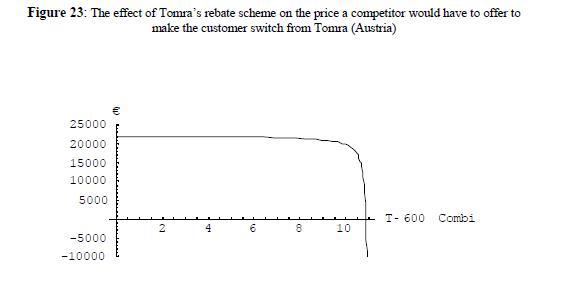
The Commission relied on this figure, and several others,6 to conclude that Tomra’s retroactive rebates had the capability of effectively foreclosing competitors.
A MANIFEST ERROR OF ASSESSMENT?
The proper methodology for the analysis of retroactive rebates is set out in DG Comp’s Guidance.7 To determine whether a rebate system is capable of hindering competition “the Commission will estimate what price a rival would have to offer in order to compensate the customer for the loss of the conditional rebate if the latter would switch part of its demand (‘the relevant range’) away from the dominant undertaking. The effective price that the rival will have to match is not the average price of the dominant undertaking, but the normal (list) price less the rebate it loses by switching, calculated over the relevant range of sales and in the relevant period of time.”8 The Guidance adds that “the relevant range over which to calculate the effective price in a particular case depends on the specific facts of each case and on whether the rebate is incremental or retroactive … For retroactive rebates, it will generally be relevant to assess in the specific market context how much of a customer’s purchase requirements can realistically be switched to a rival …”9 It then concludes by stating that “the lower the estimated effective price over the relevant range is compared to the average price of the dominant supplier, the stronger the loyalty-enhancing effect. However, as long as the effective price remains consistently above the LRAIC [Long Run Average Incremental Cost10] of the dominant undertaking, this would normally allow an equally efficient competitor to compete profitably notwithstanding the rebate. In those circumstances the rebate is normally not capable of foreclosing [an AEC] in an anti-competitive way.”11
The analysis of Tomra’s retroactive rebates departed from the methodology for the assessment of such rebates in DG Comp’s Guidance. While it computed the effective price that the rival would have to match depending on the number of units the customer switched away from Tomra, it did not assess whether that price was above or below the LRAIC of the dominant undertaking. Arguably, this omission was not problematic because, as shown in Figure 23 (see the figure below), the effective price a competitor would have to pay would be very low when the number of units that can be switched away is very small, and even negative for the very last unit before the threshold is exceeded (which is the first unit a competitor could switch away from Tomra, i.e., the first contestable unit). If the effective price is negative (or very close to zero), then it is a fortiori below LRAIC, since such costs are necessarily, and non-trivially, positive.
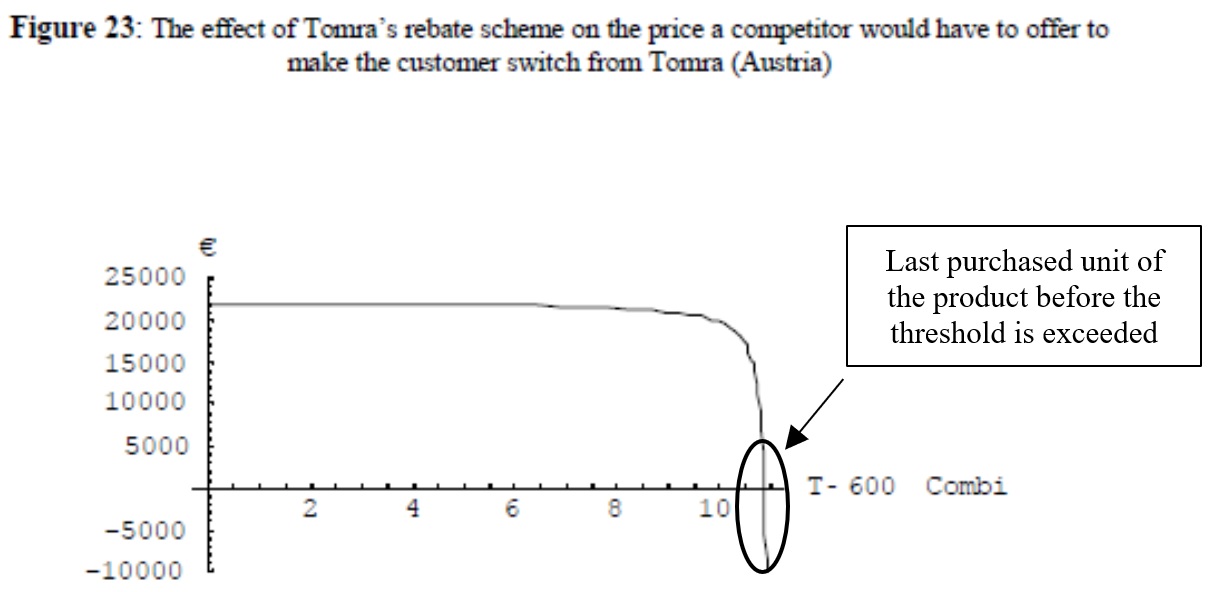
The problem is that the Commission’s graph in Figure 23 is misleading. The rebate scheme analyzed in Figure 23 did not result in very low or negative effective prices. This is because the last unit before the threshold was exceeded was unit 10. Thus, the correct representation of the rebate scheme in question is given by Figure 1 below. As can be seen, the effective price for unit 10 is positive and not that much smaller than the price for the first unit.12 So, it was not correct to presume that the effective price for the last unit before the threshold (or for any other unit) was necessarily below LRAIC.
In short, the Commission’s conclusion that the rebate in question was capable of foreclosing competition was unsupported, since to reach that conclusion the Commission should have compared effective prices and costs. Consider for example that the LRAIC was €15,000. Then the effective price for unit 10 would have been above LRAIC in which case, as acknowledged by the Guidance, the rebate would not be capable of producing foreclosure effects.
Figure 1. Corrected Figure 23
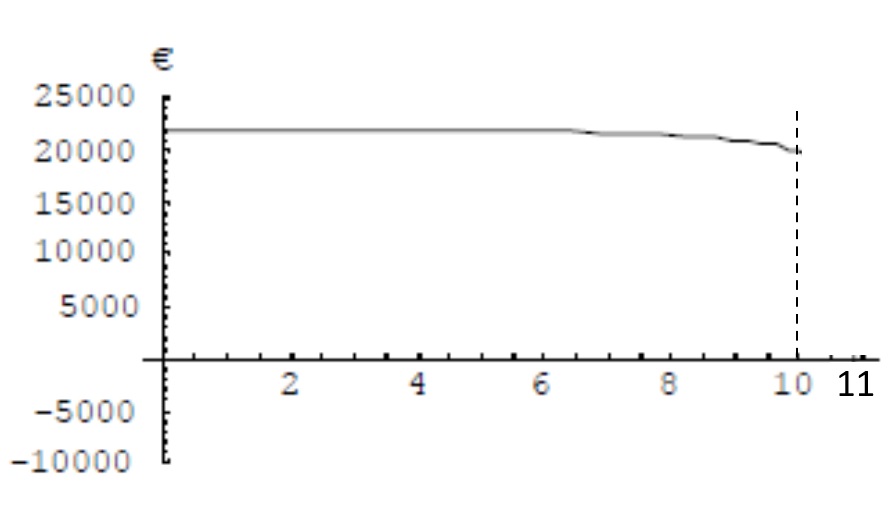
There are seven rebate schemes analyzed in the decision where allegedly effective prices were very low or negative. It turns out that for five of those schemes the decision’s conclusions are based on graphs that misrepresent the facts, as Figure 23 does.
In the other two cases effective prices were very low or negative, and hence would have been necessarily below costs, for volumes close to the rebate threshold. But, as stated in the Guidance, the relevant effective price-cost comparison is generally not the one for the last unit before the threshold, because what matters is whether the competitor can profitably match the dominant company’s effective price at the quantity such competitor is actually trying to sell, and that typically is greater than one unit. Tomra’s competitors did try (and managed to) sell significant volumes to individual customers. Thus, the relevant effective prices for the assessment of capability were not very low or negative, which means that, also in these two cases, the Commission’s conclusion that the rebates schemes used by Tomra were anticompetitive were also unsupported. Such a conclusion could only be made after a proper effective price-cost comparison; one that was never made.16
Since I am not a competition lawyer, I do not dare to opine whether all this proves that the Commission’s assessment of Tomra’s retroactive rebates constitutes a manifest error of assessment as a matter of law. Yet, there is no doubt in my mind that such an assessment is blatantly erroneous as a matter of economics. If one compares the corrected Figure 23 in Figure 1 with Figure 23 in the Decision (as represented in page 3 above), it becomes clear that the Commission’s conclusions in connection with Tomra’s retroactive rebates are based on effective prices calculated for units (or portions of units) that could not be switched away by Tomra’s competitors (i.e., they were not contestable) and, therefore, were irrelevant for the purposes of a foreclosure analysis.
Let me explain this further. Consider Figure 2 below. It is derived from Figure 23 so that unit 10 in Figure 23 is unit 1 in Figure 2. Unit 10 in Figure 23, and hence unit 1 in Figure 2, was the first unit a competitor could switch away from Tomra. No competitor of Tomra would try to sell less than one RVM unit to any of Tomra’s customers; it simply cannot because RVMs are not divisible. So, calculating effective prices for less than one unit in Figure 2 (or more than 10 units in Figure 23) is, quoting Nobel Prize Laureate Prof. Amartya Sen, like “singing romantic songs about an abstract motherland,” i.e., a meaningless exercise.14
Figure 2. Revisiting Figure 23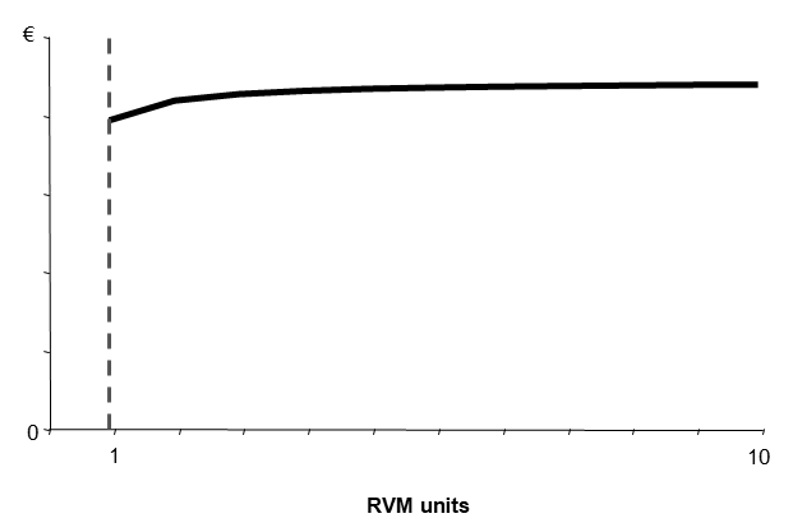
For these reasons, I was certain that the Commission’s analysis of Tomra’s retroactive rebates would obviously qualify as a manifest error of assessment, but this is not what the General Court first and later the Court of Justice concluded. Why?
THE VIEWS OF THE GENERAL COURT AND THE COURT OF JUSTICE
To my surprise, the GC concluded, at paragraph 268, that “the fact that some diagrams contain errors cannot, on its own, undermine the conclusions relating to the anticompetitive nature of the rebates operated by [Tomra].” The Court in turn stated, at paragraph 80, that “neither the Commission nor the General Court was obliged to examine the question of whether the prices charged by the Tomra group were or were not lower than their long-run average incremental costs …”
I believe these outstanding conclusions were the result of both the GC and the Court accepting the Commission’s characterization of Tomra’s arguments. The Commission persuaded both courts that Tomra held that (a) “the demonstration of the existence of ‘negative prices’ was a prerequisite to a finding that the loyalty schemes were abusive,”15 and (b) the exclusionary mechanism represented by retroactive rebates does require a finding that the dominant undertaking sacrificed profits.16
The Courts correctly concluded against propositions (a) and (b); they are both incorrect as a matter of economics. However, those propositions did not reflect Tomra’s position, at least not as I had defended it in my written contributions.17 Rather, they represented the views of a straw man created by the Commission. Tomra did not claim that the existence of negative prices is a prerequisite to a finding that the loyalty schemes are abusive. Instead, the claim was that the Commission cannot avoid comparing the effective prices resulting from the application of a retroactive rebate scheme and costs unless those effective prices are negative. I have explained in the previous section why Tomra’s position is correct. So, given that the evidence of negative effective prices in the Decision was flawed, then the Commission’s failure to consider the costs of the dominant undertaking fatally undermined its decision.
Likewise, Tomra’s position was not that the Commission had to establish the sacrifice of profits by comparing Tomra’s actual prices and costs. Its claim was that the Commission ought to have compared the effective prices resulting from the application of its rebates and Tomra’s costs. The GC and the Court were right in saying that “if retroactive rebates are given, the average price obtained by the dominant undertaking may well be far above cost and ensure a high average profit margin. However, retroactive rebate schemes ensure that, from the point of view of the customer, the effective price for the last units is very low because of the ‘suction effect.’” (Paragraph 267.) Yet, unless effective prices are negative, whether the effective price for the last units is or is not very low (i.e., whether the suction effect is strong enough) can only be established by comparing effective prices and costs, which the Commission failed to do.
A FAILURE OF THE REVIEW PROCESS?
How could the GC and the Court so grossly misinterpret Tomra’s arguments regarding the flaws in the Commission’s assessment of Tomra’s retroactive rebates? How could they conclude in practical terms that the “as-efficient competitor test” can be implemented without taking account of the dominant undertaking’s costs; that it suffices to claim that effective prices are very low? How could they fail to realize that the methodology used in the Decision was at odds with that in the Commission’s Guidance?
While I do not know the answers to these questions, I am truly convinced that the answer is not incompetency or bad faith. The judges that were part of the chambers that reviewed the Commission’s decisions at both courts, and their référendaires, are highly competent, many of them with significant experience in competition law matters. They of course acted in good faith, holding the interests of the Union’s citizens at heart.
So? Maybe Tomra’s counsel and economists (i.e. my colleagues and I) were unable to explain ourselves well? Maybe the Commission’s counsel — including Mr Gippini-Fournier, one of the best advocates I have ever met — managed to craft a plausible narrative, simple and persuasive, though in my opinion specious, while Tomra’s story was correct but complex? Maybe the Commission’s decision not to involve its economists in the judicial review process — no one from the Chief Economist Team attended the GC Oral Hearing — was the right one from a strategic viewpoint? Maybe the GC and the Court considered that the debate about Tomra’s retroactive rebates was of second order given the exclusivity clauses that Tomra also used?
A real possibility is that the GC and the Court considered the whole discussion about the existence and size of the suction effect to be irrelevant. I thought then, and still think, that as a matter of economics the Commission’s case hinged on the size of that effect, which could only be established by comparing Tomra’s effective price and cost. But what if Tomra’s rebates were regarded as per se abusive because they were conditional and retroactive, irrespective of the resulting suction effect. Under this interpretation, the analysis of the suction effect in the Decision was of no legal relevance. The Commission did not need to show that the suction effect was material, as it did not need to conduct an effects analysis. Maybe for the Commission and the courts the analysis of the suction effect was part of the redundant analysis of effects? If so, the GC’s and Court’s rulings were not conditioned by the review process or the standard of review; they were dictated by the law and the precedent.
And yet, I tend to believe that the outcome at the GC, and hence of the whole judicial review process would have been very different if the Oral Hearing had been conducted differently. I would like to believe that, given the chance, I would have been able to explain that a retroactive discount can only induce loyalty if the suction effect it creates is sufficiently large, and that the analysis of that effect is thus part of the characterization of the nature of the practice and is, therefore, not part of the assessment of the likely effects of such a practice. A retroactive rebate cannot be by its very nature exclusionary unless it gives rise to a material suction effect, as a low price cannot by its very nature be predatory unless it is below cost.
In my experience judges benefit from having economic experts explain their contributions orally, having those experts cross-examined thoroughly, organizing so-called “hot tub” sessions where testifying experts are asked to question each other and debate before the court. This mode of taking economic evidence effectively narrows the differences between experts, crystallizes the main areas of dissent, limits the scope for obfuscation and straw man tactics, and helps judges adjudicate better.
I keep going to Luxembourg from time to time and there have been some positive changes. Still, I have not yet had “my day in court.” I hope I will … one day. By the way, before I conclude, you may wonder why I called my wife after the hearing. I had a burning question for her: what is the fastest way of getting a law degree so that next time I am here I can speak? Her advice? That is another story.
Click here for a PDF version of the article
1 Jorge Padilla is Senior Managing Director at Compass Lexecon. I advised Tomra in Case T-155/06 Tomra v. European Commission and in Case C-549/10P Tomra v. European Commission, April 19, 2012. I wish to thank Eric Gippini-Fournier, Sam Sadden, and Anna Tzanaki for their comments. My views do not necessarily represent the views of Compass Lexecon or its clients. The opinions in this article are the author’s sole responsibility.
2 For the avoidance of doubt, I do not mean to criticize the Commission’s legal service here. They advocated the Commission’s case professionally and ethically. They did what they are supposed to do. Their goal is to defend the Commission’s decisions and they did so with great efficacy.
3 Case COMP/E-1/38.113 – Prokent/Tomra, March 29, 2006. The Commission decision was upheld by the GC in Case T-155/06 Tomra v. European Commission, September 9, 2010, and later by the Court of Justice (the “Court”) in Case C-549/10P Tomra v. European Commission, April 19, 2012.
4 See Frank Maier-Rigaud & Dovile Vaigauskaite, “Prokent/Tomra, a textbook case? Abuse of dominance under perfect information,” Competition Policy Newsletter, Number 2, (2016), pp. 19-24.
5 Id. at page 21.
6 Figures 15, 18, 21, 22, 24 and 27.
7 DG Comp’s Guidance on the Commission’s Enforcement Priorities in Applying Article 82 EC Treaty to Abusive Exclusionary Conduct by Dominant Undertakings (2008).
8 Id. paragraph 40.
9 Id. paragraph 41.
10 “Long-run average incremental cost is the average of all the (variable and fixed) costs that a company incurs to produce a particular product.” Id. footnote 18.
11 Id. paragraph 41. Emphasis added.
12 For the readers’ amusement: note that the effective price in Figure 23 would only be negative for purchases of a “fraction” of one RVM. Of course, customers never buy a fraction of a RVM for the same reason that no on buys half a car.
13 The Commission’s conclusion was also problematic because it assumed that the only revenues associated to the sale of RVMs are those linked to the sale. However, suppliers of RVMs also earn revenues from servicing and spare parts. Servicing and spare parts made an important contribution to Tomra’s profits – more than 50 percent. Any sensible competitor would take this future revenue into account when deciding whether to compete for a customer’s demand.
14 See Amartya Sen, Collective Choice and Social Welfare, Penguin Books, (1970), page 45 of the 2017 edition.
15 See General Court, at paragraphs 258 and 266, and Court, at paragraphs 58 and 73.
16 See General Court, at paragraphs 267, and Court, at paragraphs 78.
17 Not everybody agrees with my characterization of Tomra’s position in this respect. It has been argued that Tomra’s counsel indeed held propositions (a) and (b) and their oversimplification of the economic case was the reason for Tomra’s defeat.
Featured News
EU Conducts First-Ever Raids on a Company Under Foreign Subsidies Regulation
Apr 23, 2024 by
CPI
FTC Moves to Ban Non-Compete Agreements, Aiming to Boost Labor Mobility
Apr 23, 2024 by
CPI
Federal Judge Nods at $418M Deal in Real Estate Antitrust Suit
Apr 23, 2024 by
CPI
Mexican Watchdog Probes Amazon and Mercado Libre Over Loyalty Bundles
Apr 23, 2024 by
CPI
Competition Commission of India to Probe AI Landscape for Competition
Apr 23, 2024 by
CPI
Antitrust Mix by CPI
Antitrust Chronicle® – Economics of Criminal Antitrust
Apr 19, 2024 by
CPI
Navigating Economic Expert Work in Criminal Antitrust Litigation
Apr 19, 2024 by
CPI
The Increased Importance of Economics in Cartel Cases
Apr 19, 2024 by
CPI
A Law and Economics Analysis of the Antitrust Treatment of Physician Collective Price Agreements
Apr 19, 2024 by
CPI
Information Exchange In Criminal Antitrust Cases: How Economic Testimony Can Tip The Scales
Apr 19, 2024 by
CPI